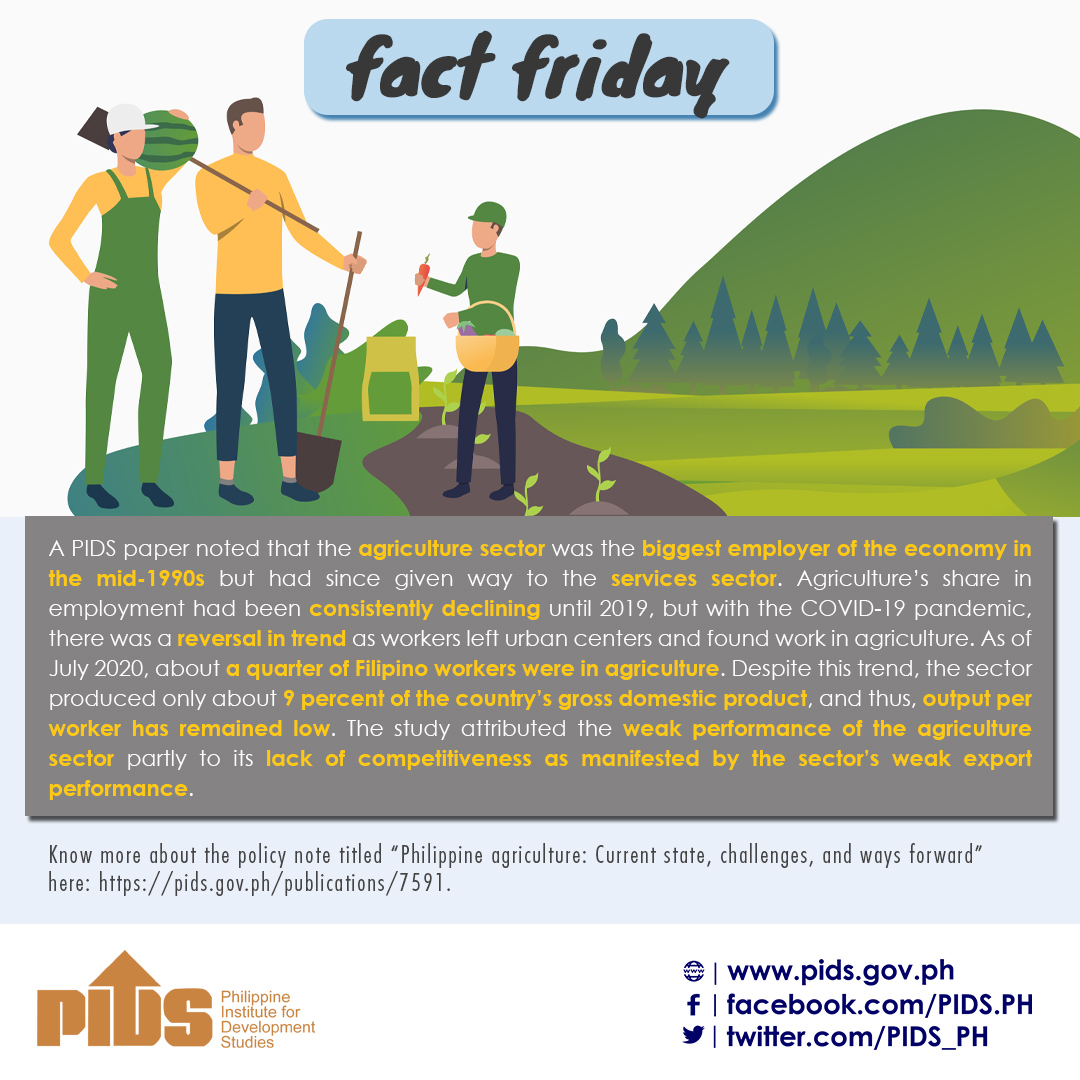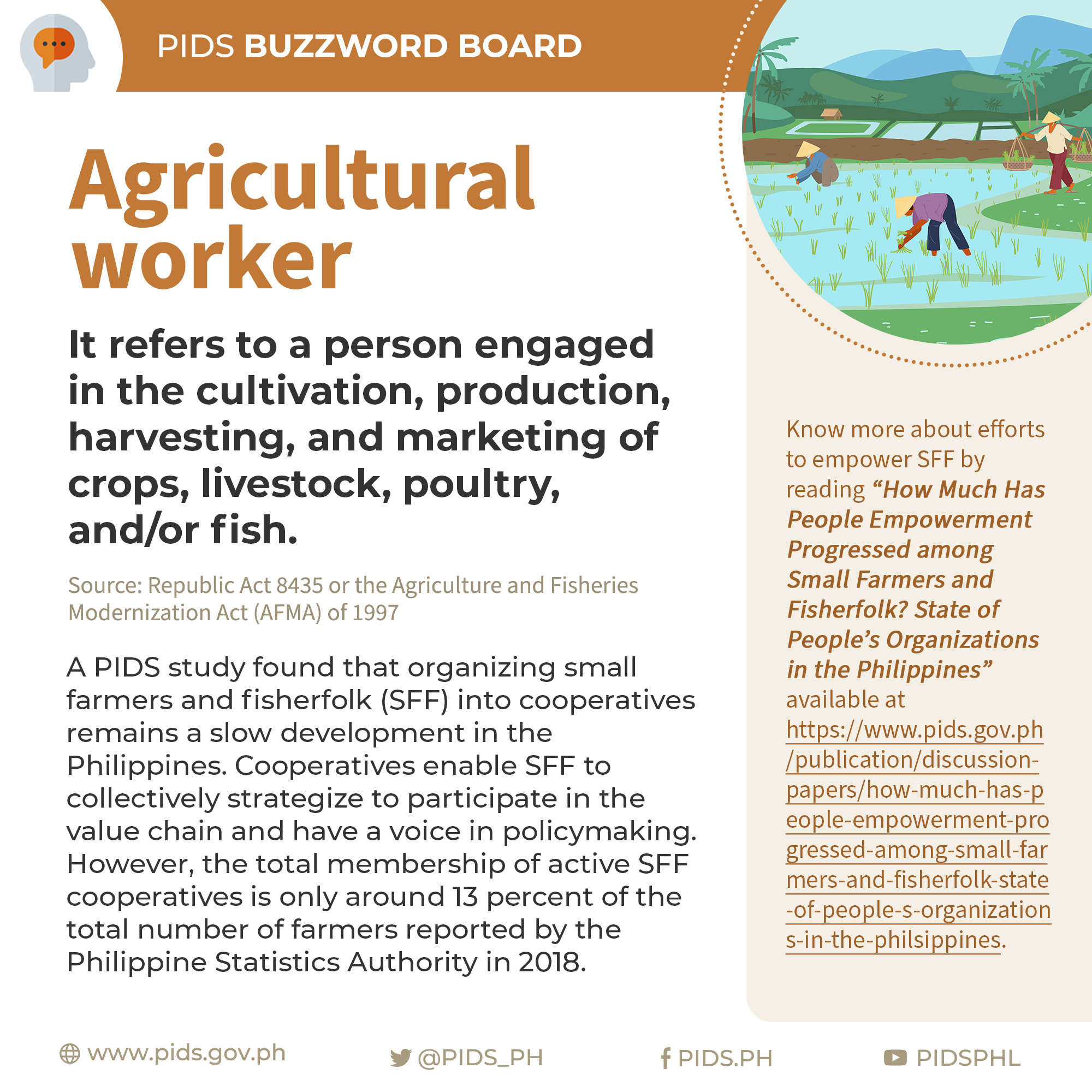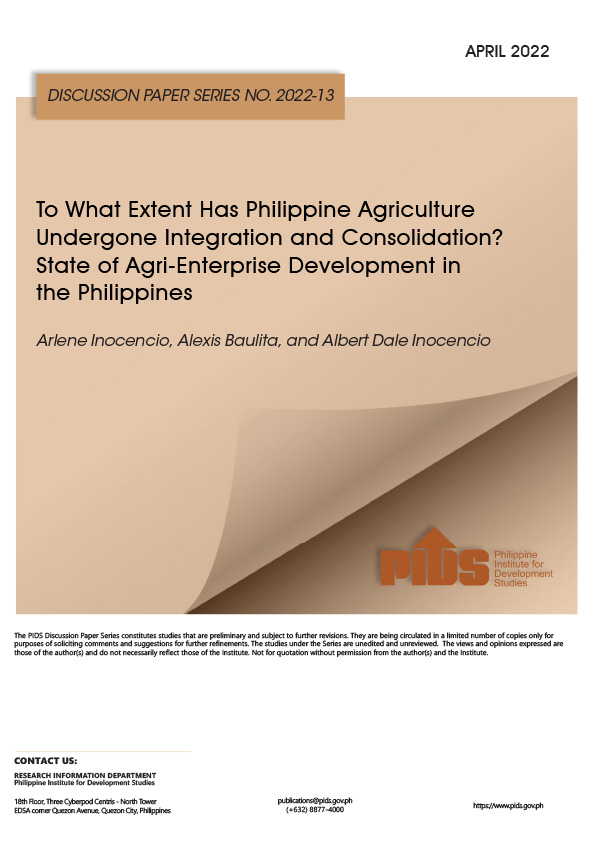
Hello, PIDS friends! Here's our #PIDSFactFriday for the week on the country’s agriculture sector.
A PIDS paper noted that the agriculture sector was the biggest employer of the economy in the mid-1990s but had since given way to the services sector. Agriculture’s share in employment had been consistently declining until 2019, but with the COVID-19 pandemic, there was a reversal in trend as workers left urban centers and found work in agriculture. As of July 2020, about a quarter of Filipino workers were in agriculture. Despite this trend, the sector produced only about 9 percent of the country’s gross domestic product, and thus, output per worker has remained low. The study attributed the weak performance of the agriculture sector partly to its lack of competitiveness as manifested by the sector’s weak export performance.
Know more about the policy note titled “Philippine agriculture: Current state, challenges, and ways forward” here: https://pids.gov.ph/publications/7591.
A PIDS paper noted that the agriculture sector was the biggest employer of the economy in the mid-1990s but had since given way to the services sector. Agriculture’s share in employment had been consistently declining until 2019, but with the COVID-19 pandemic, there was a reversal in trend as workers left urban centers and found work in agriculture. As of July 2020, about a quarter of Filipino workers were in agriculture. Despite this trend, the sector produced only about 9 percent of the country’s gross domestic product, and thus, output per worker has remained low. The study attributed the weak performance of the agriculture sector partly to its lack of competitiveness as manifested by the sector’s weak export performance.
Know more about the policy note titled “Philippine agriculture: Current state, challenges, and ways forward” here: https://pids.gov.ph/publications/7591.
Gallery Images:








